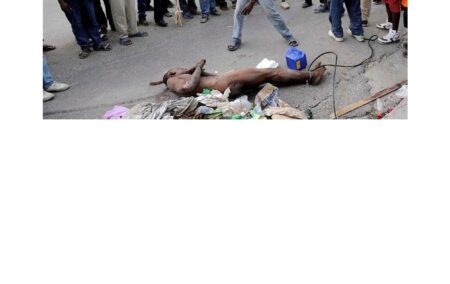High levels of unemployment, crime and corruption have pushed many South Africans over the edge, as the government time and time again fails to meet the public’s expectations.
It’s not hard to find a dissatisfied South African. Public confidence has evaporated: in November 2017 Ipsos reported that only 20% of South Africans believed that the country was going in the right direction, a massive drop from the 40% who believed the country was going in the right direction in November of 2015.
As politicians fail to deliver on their promises and faith is lost in the police force to properly fulfil its role in society, South Africans have decided to take matters into their own hands, setting dangerous precedents for the future of the country.
The Edelman Trust Barometer assigns a score of 1 to 100 (higher being better) to each country as a representation of the people’s trust in various institutions. With South Africa scoring an embarrassingly low 14 for Trust in the Government, it is no wonder that incidents of unrest per 100 000 people have risen to three times the number for most of the 2000s. The South African Police Service (SAPS) defines unrest as including protests as well as industrial action.
However, as the first of the born-free generation are reaching adulthood, a new trend of violence-driven protests has appeared, as South Africans’ primary method of showing displeasure. The SAPS reports that in the 8 years from 2010 to 2018, peaceful crowd-related incidents have decreased in number by 5.3%, whereas unrest-related incidents have increased by a massive 269%, with almost a quarter (24.5%) of crowd-related incidents being unrest-related in the 2017/2018 year as the youth turn to violence and vandalism in an effort to make their voices heard.
This was significantly seen in the #FeesMustFall protests of 2015, 2016 and 2017. Starting peacefully and with strong support, things turned sour when demands were not met. The mob, swept into a frenzy and believing in a fight for a righteous cause, quickly disregarded all the rules. Well-educated and orderly students were talked into condoning vandalism and arson, leading to many being arrested or expelled from their respective universities. Classes were suspended sometimes for weeks on end, and #FeesMustFall cost the country an estimated R600 million in property damage.
But it is not just the youth who are turning to violence. Many communities are left defenceless against high levels of crime with a poorly trained and thinly spread police force being unable to maintain law and order. StatsSA reports that only 54% of households in South Africa are satisfied with the police in their area. Additionally, many feel that the courts are doing a poor job, with 45.6% of dissatisfied households feeling that the courts are too lenient on criminals.
These feelings of dissatisfaction have given rise to an increase in vigilantism and mob justice, with SAPS reporting that an alarming 849 murders have been driven by mob justice. One problem with vigilantism is that people may be killed without their guilt having been established. The SAPS has admitted that the number of vigilante killings is probably much higher than figures suggest, as few dare report these murders out of fear of being labelled as criminal sympathisers. Add to this the recent xenophobia-driven killings, assaults and vandalism, and it becomes evident that South Africa is being subjected to mob violence.
It has become a sad truth that where large groups of dissatisfied people gather, death and destruction often follow, in the absence of law and order. When did this become acceptable, in a country that supposedly strives for peace and reconciliation? Since 1994, many South Africans have voted in elections with a view to achieving change. When voters believe that the opposition offers nothing, people either don’t vote or don’t even register to vote. The Electoral Commission of South Africa reported a voter turnout of 66% for the 2019 national elections. How many people were eventually registered and eligible to vote? 26 779 025 people registered to vote. Of these 17 671 616 actually voted. This amounted to a voter turnout of 65,99% compared to 73,48% in 2014.
It must be remembered, however, that 35.9 million people were eligible to vote but 9.2 million did not vote. It becomes clear that many South Africans do not believe that voting can lead to change. Peaceful protests and pleading with the government are shown to be largely ineffective, gathering too little media attention and posing no threat to those in power. Is it strange, then, for people to take matters into their own hands? Without a shift in government attitudes that shows a will to address the problems that plague South Africans, our country is on a dangerous path to being run by violence-fuelled mobs.
Stephan Kersop is currently doing an internship at the IRR.
Readers are invited to take a stand with the IRR by clicking here or sending an SMS with your name to 32823. Each SMS costs R1. Ts and Cs apply.

